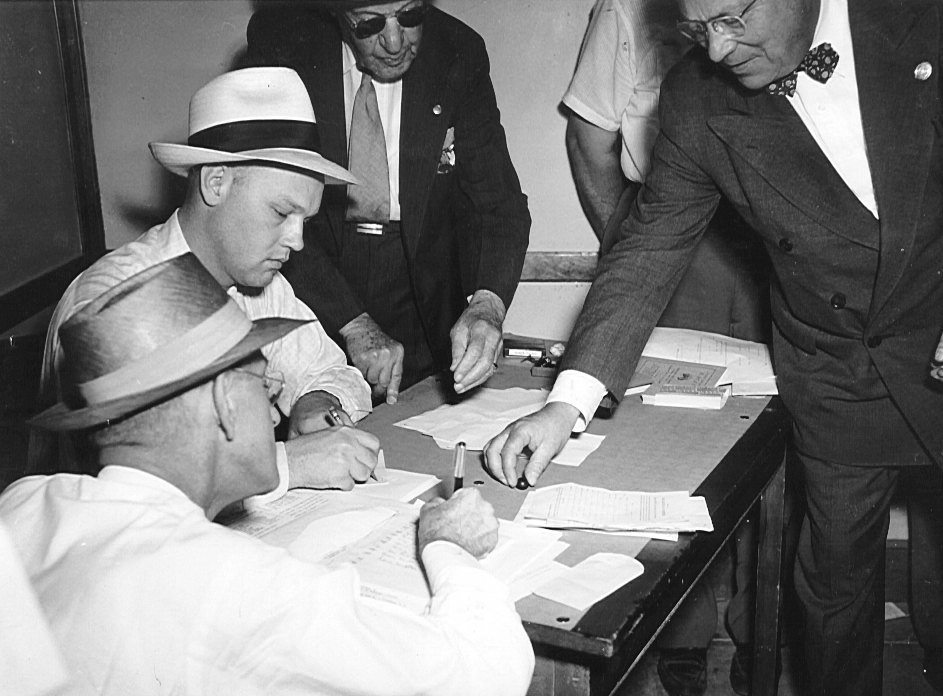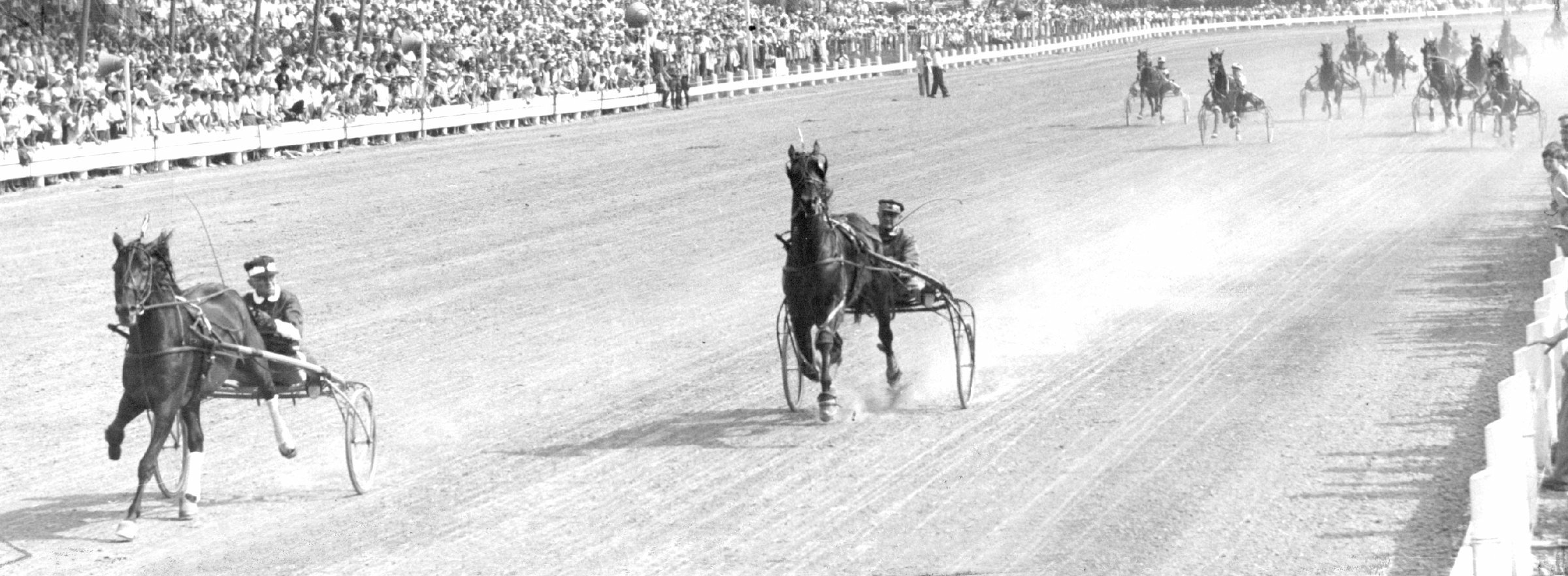Hoot Mon - 1947
Hoot Mon, holder of the 2:00 record for the Hambletonian was twice sold for $50,000: first by his breeder, Charles W. Phellis, to Castleton Farm, then a year after his Hambletonian victory, for the same amount to Hanover Shoe Farms where he stood at stud. In the hands of Fred Egan, Hoot Mon made his modest debut at Old Orchard, Maine. An impressive second to heavily-favored Rodney in the Tompkins and wins in the American Stakes at Milwaukee and the DuQuoin Stakes led to his sale to Castleton. The duel with Rodney resumed in Lexington with Hoot Mon prevailing. At three, Hoot Mon won a $3,000 stake in California early, then was injured when shipped East. He finished second to Rodney on June 20, and didn’t race again until the Hambletonian. Master horseman Sep Palin brought the colt back from lameness and layoff for the Hambletonian. Rodney took the opener in 2:012, Hoot Mon a fast-closing second. The next mile, Hoot Mon was away a bit slowly, Rodney setting a swift pace. Leaving the half, Hoot Mon moved up and outdrove Rodney in the stretch to win by two lengths in the official time of 2:00. Palin timed his colt in 1:593. The final was clinched by Hoot Mon in 2:021 handily. Thereafter, the black colt won the American Stake, the DuQuoin Stake, and the $36,905 Kentucky Futurity to wind up a career in which he earned $74,950. His first crop appeared at the races in 1952 and they proceeded to set marks from the word go. His eleven trotting winners, seven in 2:10, set an all time mark for the first crop by a trotting stallion and their winnings totalled $132,667.58.
The second heat was the first 2:00 mile in the Hambletonian; Palin claimed to have timed his colt in 1:59.3. The first of three black horses to win. Purchased by Castleton Farm (Frances Dodge Johnson & her husband, James B. Johnson) during his 2-year-old year for $50,000, Hoot Mon was sold again for the same price to Hanover Shoe Farm at the end of his racing career. Hurt during a shipping accident, Hoot Mon did not start in the six weeks before the race. The Smith starting gate was used to start the field. The Smith gate ran on a track along the inside rail. It was eventually abandoned by the harness industry. Victory Song, a heat winner of the previous Hambletonian and second overall, was selected the first Harness Horse of the Year in a poll of 50 sports editors, harness writers and radio commentators. The Trotting Horse Club of America sponsored the poll. Coincidentally, in 1948, Rodney, a heat winner and runner-up in summary of the ‘47 Hambletonian won the second annual Horse of the Year honor.












